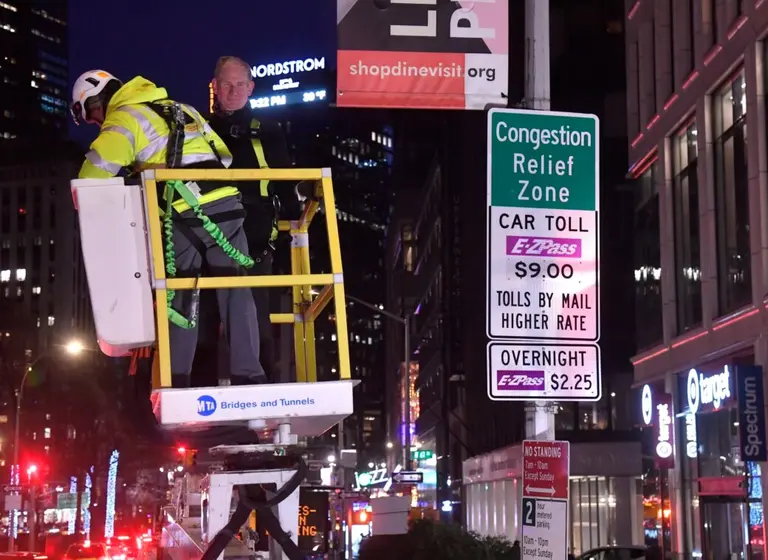NYC breaks ground on $200M project to rebuild and elevate The Battery

Image courtesy of Michael Appleton/Mayoral Photography Office on Flickr
New York City officials this week broke ground on an ambitious project to defend Lower Manhattan from climate change. Mayor Eric Adams on Monday announced the start of work on the city-funded Battery Coastal Resilience Project, a $200 million plan to rebuild and raise the wharf promenade in The Battery, part of a larger effort to protect Lower Manhattan from sea level rise and storm surge. Slated for completion in 2026, the project will protect 100,000 residents, 300,000 jobs, and 12,000 businesses in the area, according to the city.

“The Battery Coastal Resilience project will help protect Lower Manhattan from the stronger storms that climate change is bringing while ensuring that New Yorkers can still enjoy the beautiful green space and cultural icons that the Battery has come to be known for,” Adams said in a statement.
“We’re investing billions in green and grey infrastructure across the city to ensure that New York City is ready for whatever Mother Nature can throw at us. And because the need for these projects isn’t going away any time soon, we need the federal government to establish reliable sources of funding for key coastal resiliency work across the country.”
The Battery Coastal Resilience will protect New Yorkers from that significant sea level rise and rebuild the Battery’s decrepit wharf, built in the 1940s, to withstand future storms. The project will preserve and enhance the park’s character, garden, amenities, statues, memorials, and accessibility.
The plan has received a Platinum award from the Institute of Sustainable Infrastructure’s Envision program, which endorses cost-effective, energy-efficient, and adaptable long-term infrastructure projects.
According to the NYC Panel on Climate Change (NPCC), the five boroughs are experiencing higher rates of climate change than the rest of the globe, with the NPCC projecting as much as a 23-inch rise in sea level by the 2050s and 65 inches by 2100.


The Battery Coastal Resilience is also the first major project in NYC to meet the commitments of the city’s Clean Construction Accelerator by reducing embodied emissions by over 50 percent. It will achieve this goal by using low-carbon and recycled materials, and by reducing truck traffic by using barge transportation.

The South Battery Park City Resiliency Project, an initiative led by the Battery Park City Authority, is currently under construction next to the Battery Coastal Resilience site. The project includes creating and extending an integrated coastal flood risk management system along the northern border of Battery Park, across Pier A Plaza, through Wagner Park, and to the Museum of Jewish Heritage.
A new park and pavilion is being rebuilt and lifted by 10 feet, or about 20 feet above sea level. The new Wagner Park and Pavilion includes a new restaurant and community space. The Battery Park City Authority is currently seeking an operator for the restaurant, as 6sqft reported last week.

Both projects are part of the $1.7 billion Lower Manhattan Coastal Resiliency project, including the Brooklyn Bridge-Montgomery Coastal Resilience, which began construction in the fall of 2022, and the $1.45 billion East Side Coastal Resiliency project, which had its first two public areas opened in 2022 and 2023.
On Monday, Adams also called on the federal government to create a recurring source of federal funding for coastal infrastructure that would allow NYC to more quickly complete ongoing projects. For every $1 spent on coastal infrastructure projects, $6 is saved in recovery costs, according to an official press release.
RELATED:
Get Insider Updates with Our Newsletter!
Leave a reply
Your email address will not be published.



























It will protect the areas where it is built because water will flow north just above it and into the city there-a boondoggle.
Long overdue, it will protect business and residents in lower battery park. Other systems north of this project should also be considered to be a part of this rebuild as the area is prone to flooding .
looks like Jamaica Bay is unprotected